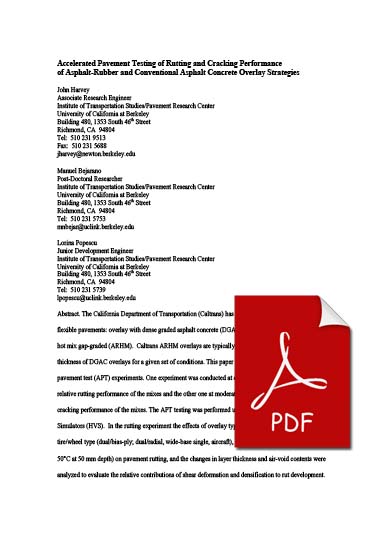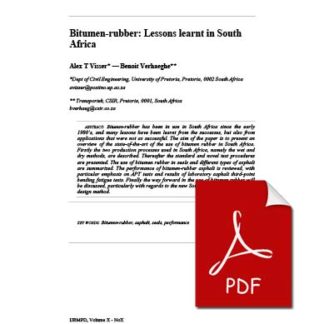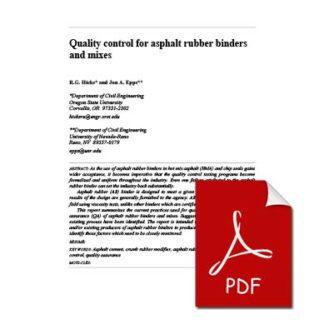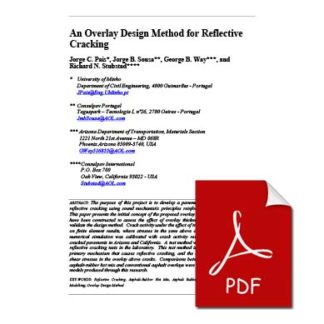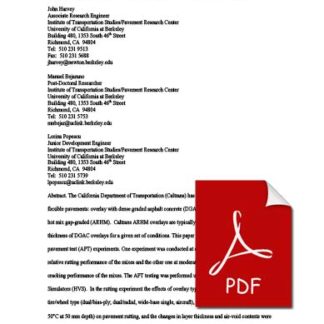Description
The California Department of Transportation (Caltrans) has two primary strategies for overlay of flexible pavements: overlay with dense graded asphalt concrete (DGAC), and overlay with asphalt rubber hot mix gap-graded (ARHM). Caltrans ARHM overlays are typically designed to be about half the thickness of DGAC overlays for a given set of conditions. This paper contains results of two accelerated pavement test (APT) experiments. One experiment was conducted at elevated temperatures to study the relative rutting performance of the mixes and the other one at moderate temperatures to study the relative cracking performance of the mixes. The APT testing was performed using a Caltrans Heavy Vehicle Simulators (HVS). In the rutting experiment the effects of overlay type, ARHM-GG overlay thickness, tire/wheel type (dual/bias-ply; dual/radial, wide-base single, aircraft), and pavement temperature (40°C, 50°C at 50 mm depth) on pavement rutting, and the changes in layer thickness and air-void contents were analyzed to evaluate the relative contributions of shear deformation and densification to rut development.
For the cracking experiment, deflection and crack length measurements indicates that the half thickness ARHM designs used by Caltrans are reasonable, and that the primary distress mechanism is reflection cracking. The results also indicate that continued hardening of the asphalt-bound and unbound layers occurs in the overlaid pavements.

